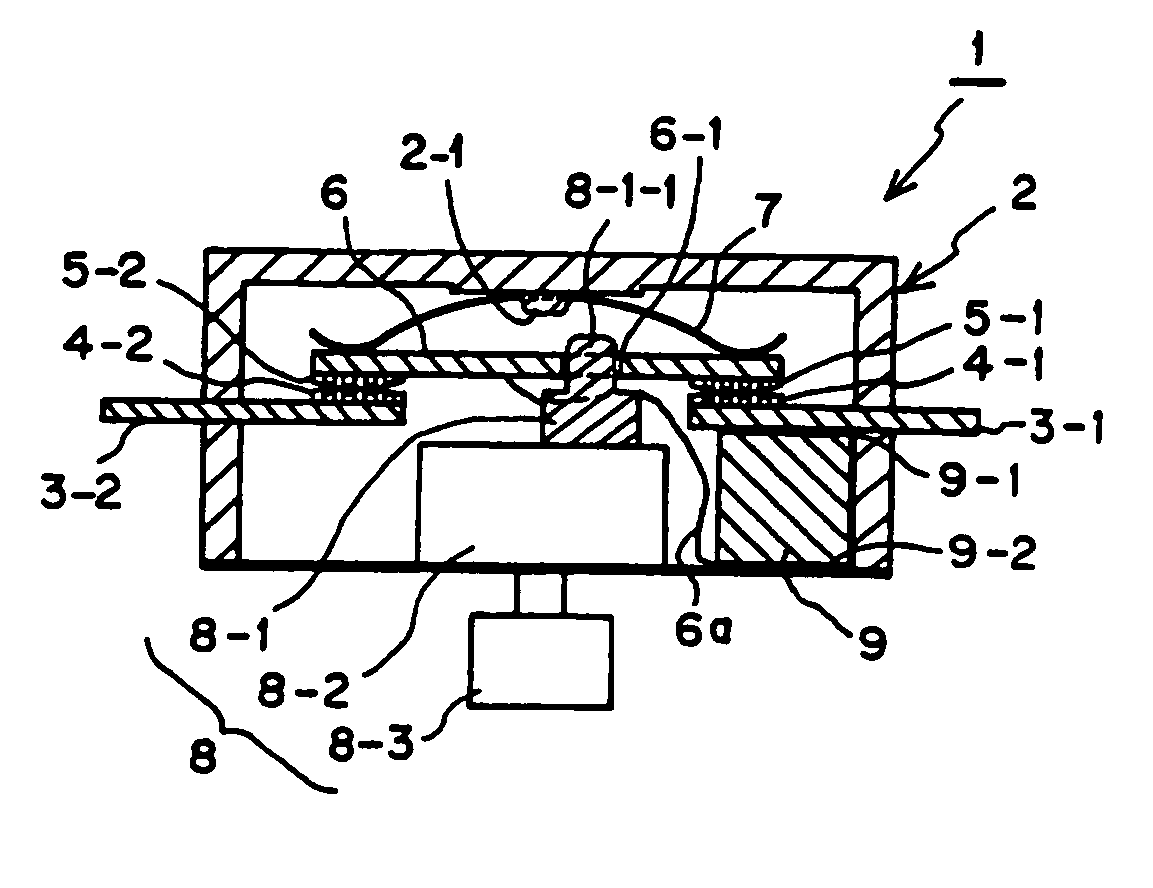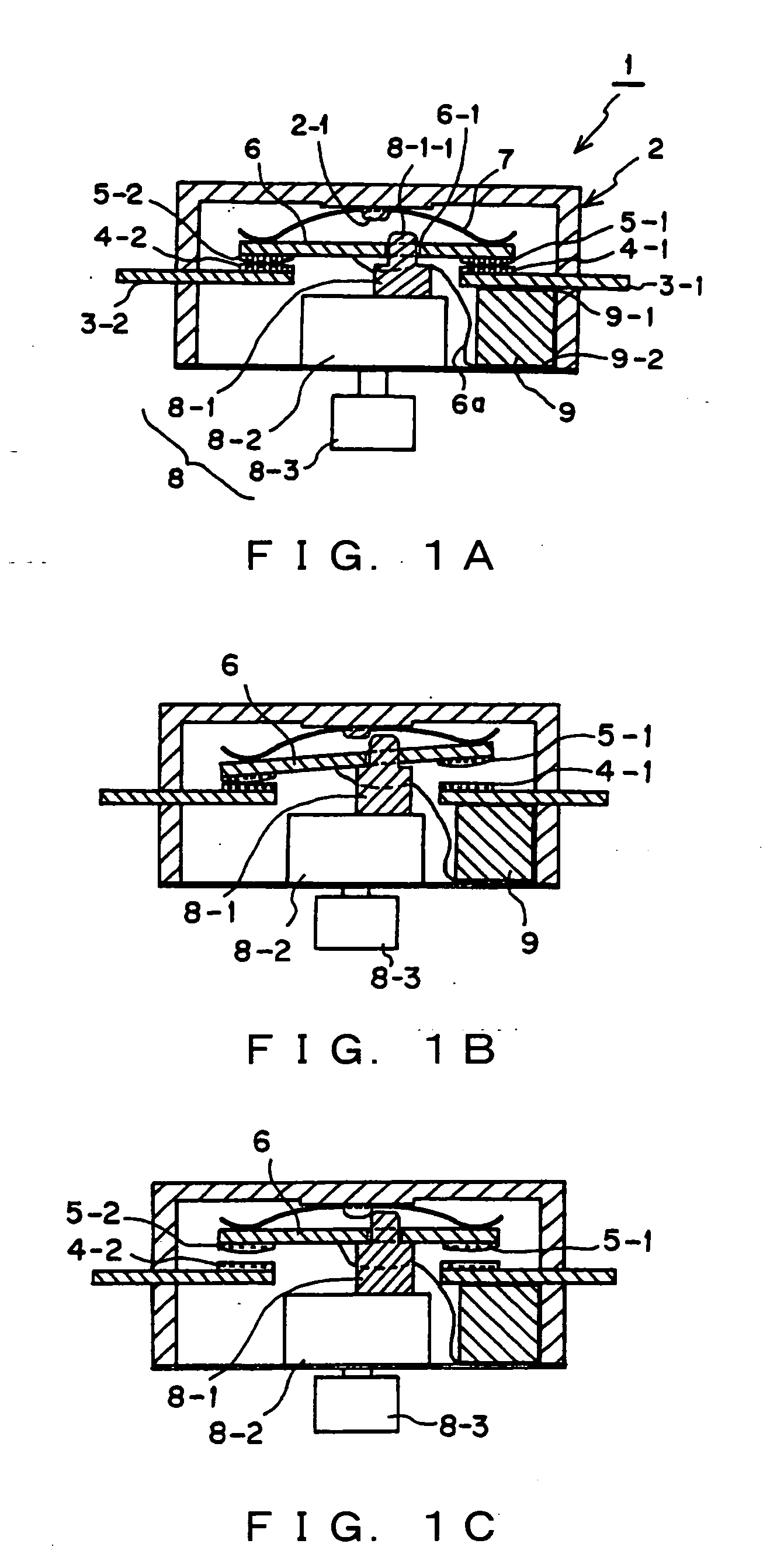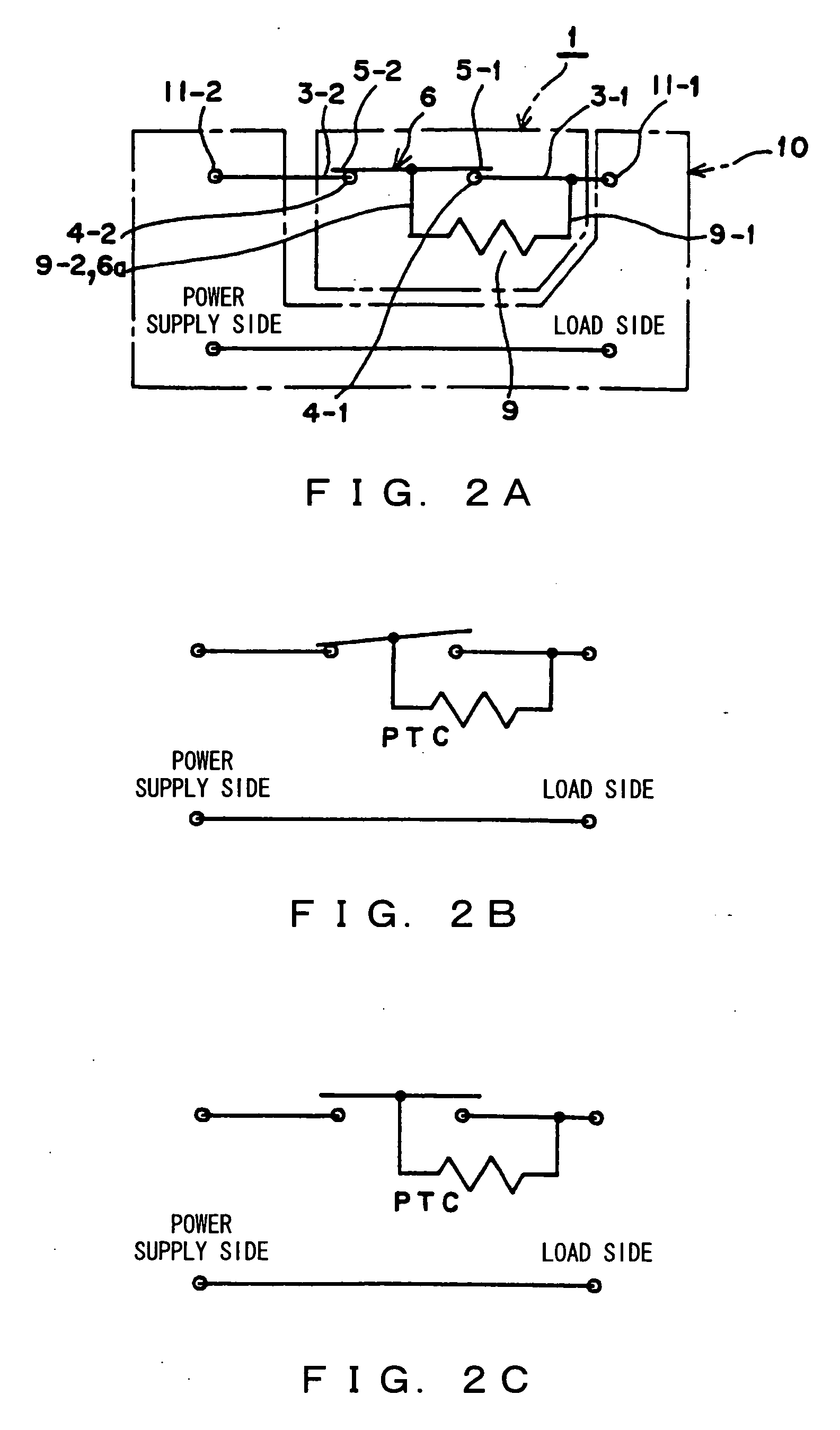Direct current cutoff switch
a cutoff switch and current technology, applied in the direction of relays, snap-action arrangements, contacts, etc., can solve the problems of high surge voltage, circuit short circuit, and inability to solve contact meltdown problems, so as to prevent contacts from fusing and prolong use
- Summary
- Abstract
- Description
- Claims
- Application Information
AI Technical Summary
Benefits of technology
Problems solved by technology
Method used
Image
Examples
Embodiment Construction
[0101] The preferred embodiments of the present invention are described below with reference to the drawings. The direct current cutoff switch embeds a PTC with a special characteristic, which is described later.
[0102]FIG. 1A is a section view showing the structure of a push-button type manually-operated switch as a direct current cutoff switch in the first preferred embodiment. FIGS. 1B and 1C show the operating states of this manually-operated switch together with FIG. 1A.
[0103]FIGS. 2A, 2B and 2C typically show the circuit configurations of the manually operated switch, corresponding to FIGS. 1A, 1B and 1C as well as the configuration of an external circuit.
[0104] The manually operated switch 1 shown in FIGS. 1A and 2A comprises a first fixed contact 4-1 which is disposed and formed in a prescribed position (in FIG. 1A, right against the center) of a housing 2 shown in FIG. 1A and is connected to a connecting section 3-1 to be connected to the connecting terminal 11-1 of an ex...
PUM
 Login to View More
Login to View More Abstract
Description
Claims
Application Information
 Login to View More
Login to View More - R&D
- Intellectual Property
- Life Sciences
- Materials
- Tech Scout
- Unparalleled Data Quality
- Higher Quality Content
- 60% Fewer Hallucinations
Browse by: Latest US Patents, China's latest patents, Technical Efficacy Thesaurus, Application Domain, Technology Topic, Popular Technical Reports.
© 2025 PatSnap. All rights reserved.Legal|Privacy policy|Modern Slavery Act Transparency Statement|Sitemap|About US| Contact US: help@patsnap.com



